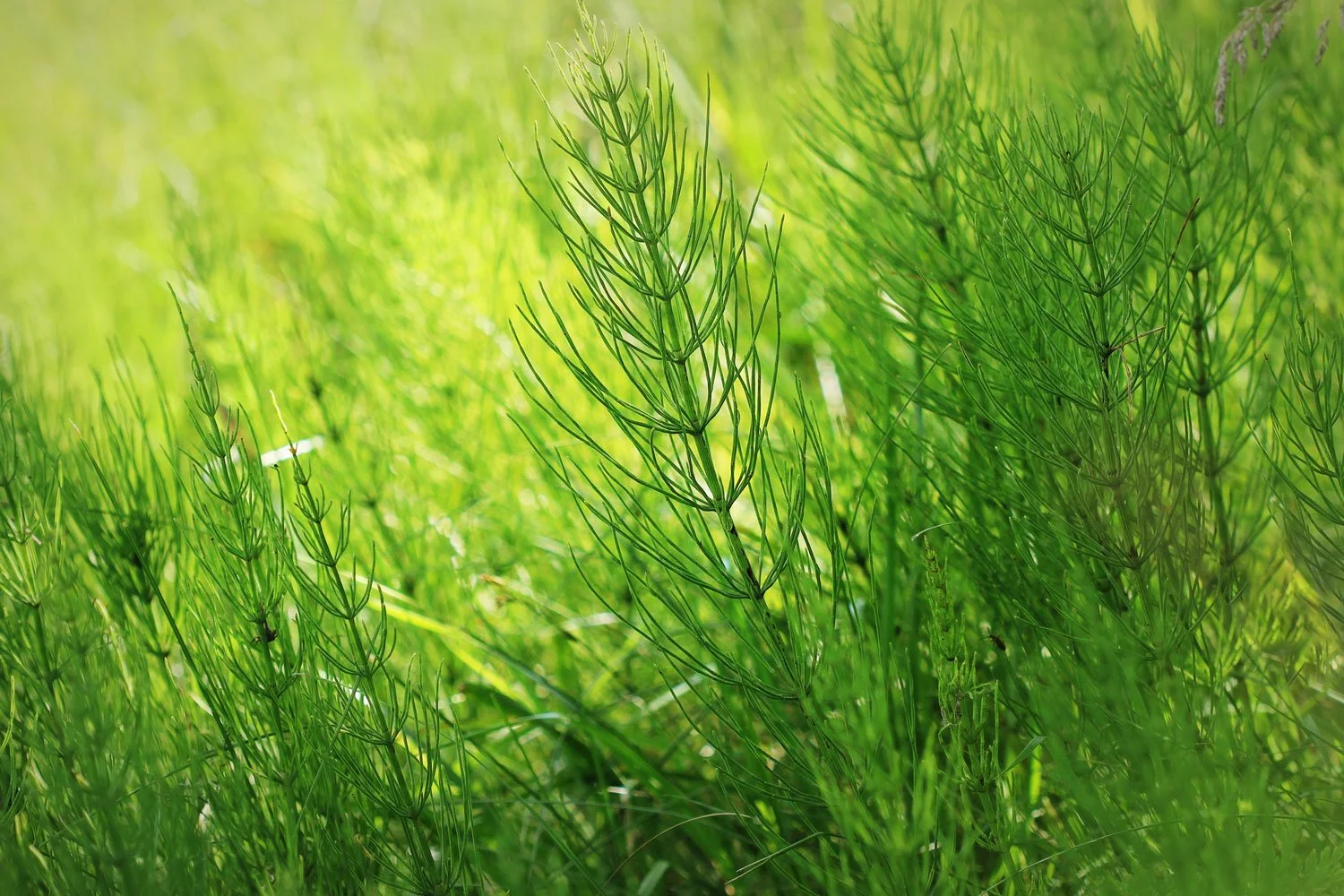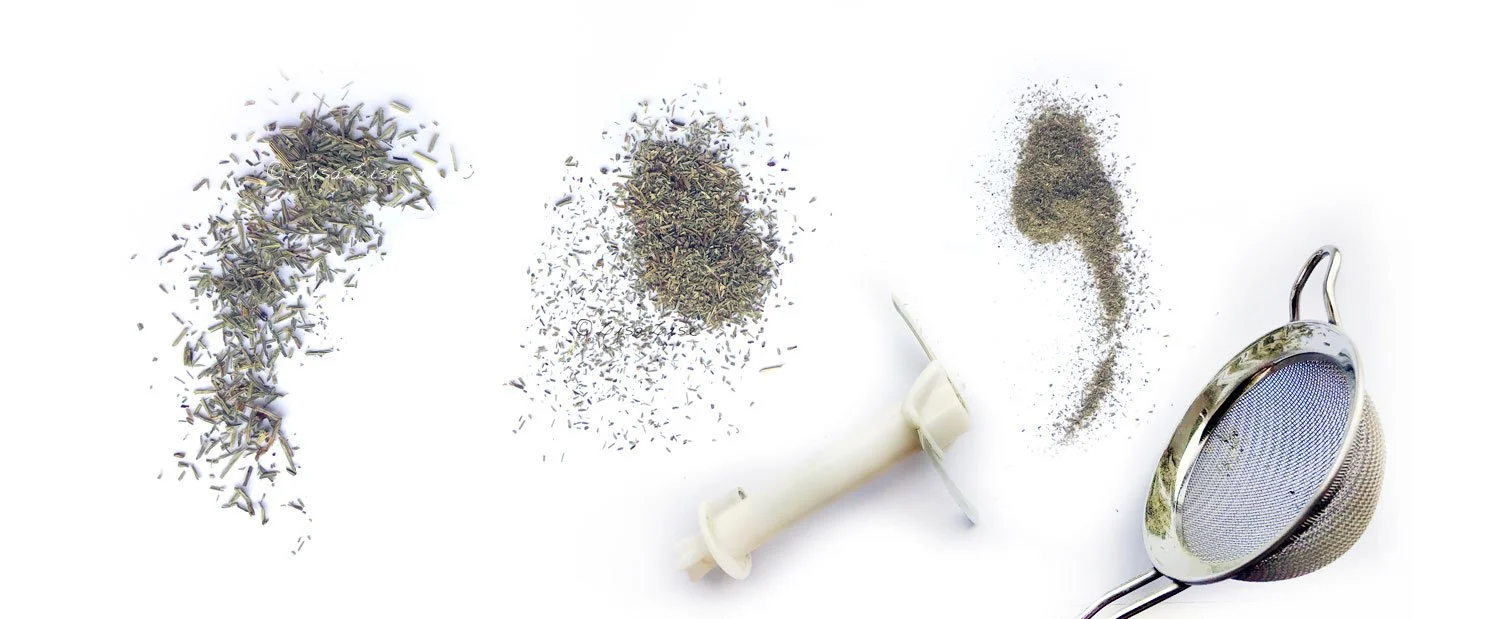Using Horsetail in Cosmetics
Lise
That funny looking botanical up there is commonly known under the name horsetail.
Today we're going to take a look at what this plant can do, why it is both loved and hated, and how to prepare it for use.
Why Horsetail
Horsetail is a fabulous ingredient for makers of cosmetics, but a scourge to some homeowners because the plant is quite invasive.
A neighbour (who hates horsetail with a passion) explained recently how "the roots grow to the very core of the earth and the plant will thereafter forever spread and you will never, ever, ever have a normal lawn again. Ever!"
I checked about the down to the core of the earth thing. The roots go down about 2 meters / 6.56 feet. That's definitely deeper than, say, dandelion roots.
This picture might well be a gardener's worst nightmare: an entire field of horsetail.
What's in Horsetail
Horsetail (INCI: Equisetum Arvense) has a natural content of beneficial components such as calcium, magnesium, saponins, and vitamins A, C, and E, as well as copper and zinc.
But the main component of this plant is silicon – horsetail contains about 10%. The reason for this high content (which I am told is quite unusual for herbs) is because horsetail has the ability to absorb silicon from the soil.
Do not confuse silicon with silicone.
Silicon is the second most abundant naturally occurring element in the earths crust, while silicone is a synthetic substance.
Silicon is one of the likely reasons horsetail has been popular for haircare and has been attributed with the ability to help strengthen and encourage hair growth.
Apart from hair care, horsetail also has a history of use in herbal medicine for numerous skin disorders where it was traditionally applied as a poultice or added to baths to help heal and soothe.
Modern science has been taking a look at this plant in recent years for its antioxidant activity.
I have been working with horsetail for a few years now - mostly for haircare (think shampoo bars), but I have tested it (successfully) in a few skincare products as well.
Whether you choose to pick and dry your own or purchase dried horsetail, there's still a bit of preparation before it can be used directly in a product such as a shampoo bar.
Horsetail Prep Session
Now this isn't a hugely complicated thing, but there are couple of tools and a little time involved, and if you're anything like me, you like to have all your ingredients right at hand when you start making.
The horsetail I used was bought dried from a supplier of botanicals for herbal teas and looked like what you see on the left below.
To get it to look like the (almost perfect) powdery substance you see pictured on the right, you need to grind, then pass the herb through a fine-mesh sieve a few times.
I used one of my (dedicated) electrical grinders for step one, and a hand-held metal sieve for step 2.
If you make a larger portion than you need, package the remaining dried powder in an airtight container and you're all set with a stock of ready-to-use horsetail powder.
Fun Fact
Despite it's name, horsetail is toxic to horses. (REF)
Do Tell
Do you use horsetail in any of your cosmetics? How do you use it? Please feel free to share in a comment below.
Find More About Horsetail
Britannica on Silicon: LINK
A-Vogel on horsetail: LINK
Horsetail as a natural antioxidant: LINK
Science Direct on Horsetail: LINK
Horsetail, History of use: LINK
Want to make your own shampoo bars? Horsetail is a star ingredient in the Nettle & Horsetail shampoo bar formula featured in the book below




